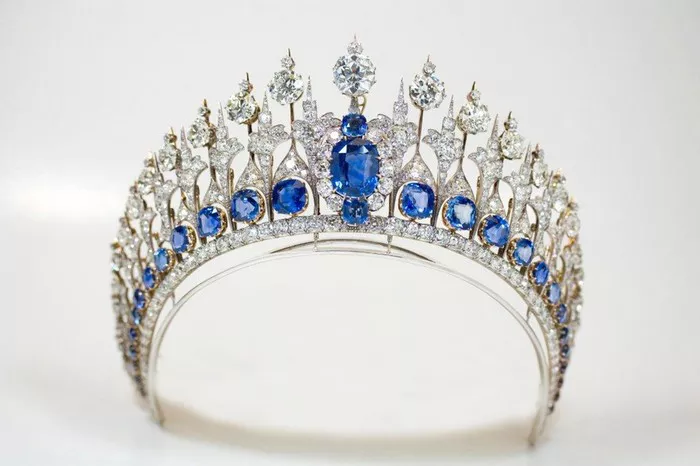Jewelry appraisal is a specialized field that requires a deep understanding of gemstones, their physical properties, and the factors that determine their value. Among the diverse range of gemstones, yellow sapphires are renowned for their striking yellow hues that can captivate and enchant anyone who beholds them. With the advent of technology, lab-grown yellow sapphires have entered the market, raising questions about how their color is achieved. This guide aims to provide a comprehensive, logical, and easy-to-understand explanation of the origin of color in lab-grown yellow sapphires.
Understanding the Basic Structure of Sapphires
Before delving into the specifics of how lab-grown yellow sapphires acquire their color, it is essential to understand the basic structure of sapphires. Sapphires, along with rubies, belong to the corundum mineral family. Corundum is characterized by its hardness, ranking second only to diamonds on the Mohs scale of mineral hardness. This hardness is due to the crystal structure of corundum, which is composed of aluminum oxide (Al2O3) molecules arranged in a closely packed hexagonal lattice.
The Role of Trace Elements in Determining Color
The color of sapphires, including yellow sapphires, is primarily determined by the presence of trace elements within the corundum crystal structure. These trace elements are often metal ions that substitute for aluminum ions in the crystal lattice. The specific trace elements present and their concentrations determine the type and intensity of color in sapphires.
How Lab-Grown Yellow Sapphires Acquire Their Color
In the case of lab-grown yellow sapphires, the color is achieved through a combination of controlled crystal growth conditions and the intentional introduction of specific trace elements. The process begins with the preparation of a raw material called sapphire seed crystal, which serves as the starting point for the growth process. This seed crystal is placed in a high-temperature furnace, where it is subjected to an environment rich in aluminum oxide and the desired trace elements.
Controlled Crystal Growth Conditions
The furnace is carefully controlled to maintain specific temperatures, pressures, and atmospheres. These conditions mimic the natural environment in which sapphires form, but with the added benefit of precise control over the process. As the raw materials melt and recrystallize, the trace elements are incorporated into the growing sapphire crystal. The specific trace elements used to produce yellow sapphires are typically chromium, iron, and titanium, which interact with each other and the crystal structure to produce the desired yellow hues.
The Role of Chromium in Yellow Sapphire Color
Chromium is a key trace element in determining the color of many sapphires, including yellow sapphires. In low concentrations, chromium can produce a delicate yellow hue. However, as the concentration of chromium increases, the color can shift towards a more intense green or even blue, depending on the presence of other trace elements and the crystal growth conditions. Therefore, precise control over the chromium concentration is crucial in producing lab-grown yellow sapphires with the desired color intensity.
The Influence of Iron and Titanium
Iron and titanium are other trace elements that play a significant role in determining the color of lab-grown yellow sapphires. Iron, in particular, can produce a range of colors from yellow to brown, depending on its concentration and the crystal growth conditions. Titanium, on the other hand, tends to produce a more muted, grayish hue when present in high concentrations. However, in combination with chromium and other trace elements, titanium can contribute to the complex coloration of lab-grown yellow sapphires.
Post-Growth Treatments
In some cases, lab-grown yellow sapphires may undergo post-growth treatments to enhance their color or remove any unwanted imperfections. These treatments can include heating, which can alter the arrangement of trace elements within the crystal structure and produce more vivid colors. In some instances, lab-grown yellow sapphires may also be treated with diffusion, a process where trace elements are introduced into the surface of the gemstone to enhance its color. However, it is important to note that these treatments do not change the fundamental nature of the lab-grown yellow sapphire; they merely enhance its appearance.
Conclusion
In conclusion, the color of lab-grown yellow sapphires is the result of a complex interplay between the crystal structure of corundum, the presence of specific trace elements, and the controlled growth conditions used in their production. By carefully managing these factors, lab-grown yellow sapphires can be produced with a range of vivid and captivating yellow hues, rivaling the beauty of natural yellow sapphires. As technology continues to advance, the ability to produce high-quality lab-grown yellow sapphires with consistent and predictable color characteristics will likely become even more refined, making these gemstones an increasingly attractive option for jewelry enthusiasts and collectors.
Related topic:


